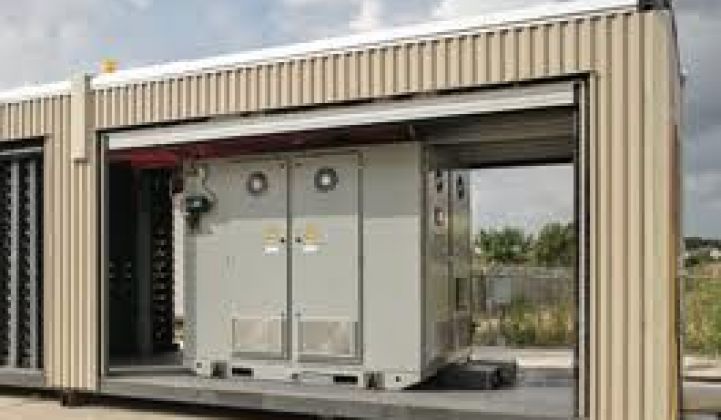Xtreme Power doesn't like to describe its technology in depth in public, but power plant owners certainly like what they see.
Duke Energy, the mega utility and power plant provider, has selected Xtreme to build a 36-megawatt dynamic power resource at its 153-megawatt wind farm in Notrees, Texas. The battery pack should go live in late 2012.
This marks the largest deal yet for Xtreme, but it's also the latest in a series of notable events for the company. Before the Duke deal, Xtreme had already won four contracts to install its storage system at wind parks in Hawaii. One of the Hawaiian parks has a 15-megawatt system and another has a 10-megawatt Xtreme storage system. Xtreme, which makes its storage systems in the U.S., also has solar park contracts. The storage systems get sold as capital equipment but can also be bought as a service, similar to the storage services offered by AES (and its lithium ion battery farm) and Beacon Power (flywheel farm).
By contrast, you can probably count all the major flow battery deals on your big toes and still have digits left over.
Storage is expected to take off rapidly: state and federal regulations will likely soon require power providers to invest in storage and/or pay for technology for ameliorating any instability their intermittent power facilities cause on the grid. Thus, Xtreme's timing, and the quality of the implicit endorsement from its customers, bodes well for company.
The most direct competitors right now are sodium batteries, made by NGK and General Electric. NGK has installed hundreds of megawatts around the world. Sodium batteries, however, operate at 300 degrees Celsius. It's not a fatal flaw, but it's an issue that power plant providers would rather not have to deal with. Sam Jaffe at IDC says he has confidence that Xtreme could one day get its prices down to $500 a kilowatt hour, or less than flow batteries and sodiums, but Xtreme is not near that price now.
Wind and solar farms, of course, use the systems to smooth out their power delivery. Wind farms can bank power produced at night and deliver it during the day when it's needed. Additionally, utilities will likely pay wind and solar farms for the right to bank power from other resources on their storage systems, says Carlos Coe, Xtreme's CEO, thereby reducing the cost of installing storage. (Coe will speak at our Networked Grid conference taking place May 3 and 4).
Using Xtreme's systems to transform a wind farm from an intermittent source of power into a well-managed source of power would add approximately 0.5 cents to 1 cent per kilowatt hour to the cost of the power flowing from the wind farm.
"The maximum would probably be as much as 2 cents per kilowatt hour," Coe told us in an interview in January. "The cost of making wind or solar a stable power source is not that expensive."
"Grid balancing services can more than offset the cost of putting it in. It will be a major functionality," he added. "As a grid asset, it has its own revenue stream. [...] It will make most of its money from providing grid regulation services."
Coe won't say what the core battery technology is, but he emphasized that it is a solid. "There is no free-flowing liquid, not gel, no paste," he said. The key to the material is that it has almost no electrical resistance, which means very little waste heat or energy lost in charging and recharging.
Xtreme investor Tom Cain has said it is fiberglass. More recently, other sources have said Xtreme relies on lead acid batteries.
The battery was originally developed by Tracor and Ford Aerospace in the early '90s to go inside electric cars. After that wave of EVs died, Ford put the technology on the shelf. Xtreme spun it out and finalized development in the past few years. Another note: the old batteries can be recycled. AES Energy Storage just recently unfurled an 8-megawatt storage facility in New York state that will grow to 20 megawatts this year, while Beacon Power has erected a flywheel park in that state.
The company, however, does not like to refer to its products as batteries. It sells systems, which includes software and controls.



